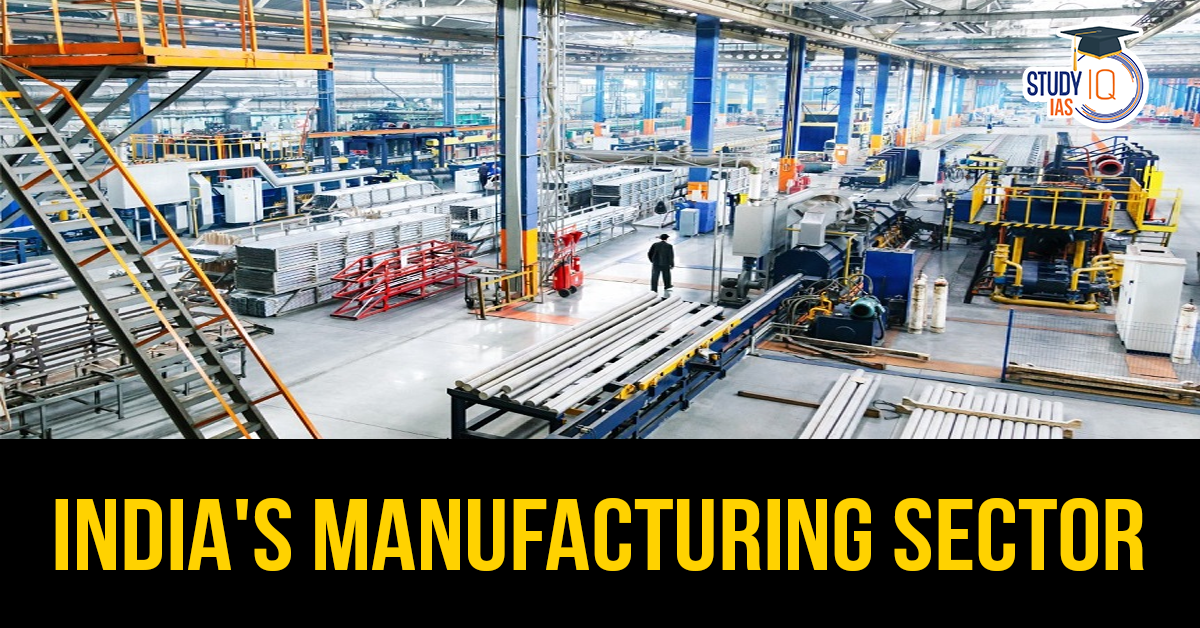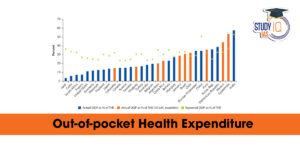Table of Contents
Context: The innovation-driven, high-tech manufacturing, fueled by R&D and advanced skills, and current high tariffs demand a manufacturing reset, requiring policies that directly confront the challenges.
India’s Manufacturing Sector Growth and Performance: Insights from ASI 2022-23
Impressive Sectoral Growth
Manufacturing output grew by 5% in 2022-23, with GVA increasing by 7.3%.
- PLI-covered sectors like basic metals, petroleum products, food products, chemicals, and motor vehicles contributed 58% to total manufacturing output, registering an output growth of 5%.
- The recovery from the COVID-19 pandemic disruptions is evident, with performance surpassing pre-pandemic levels.
PLI Scheme Impact
The PLI scheme has enhanced productivity in sectors such as:
- Mobile manufacturing
- Electronics
- Automobiles
- Pharmaceuticals
- Textiles
This scheme underscores India’s ability to align policy support with industrial growth.
Why India Needs to Reset Its Manufacturing Sector
- Lagging Manufacturing Productivity: India’s per capita value added in manufacturing is $0.32K vs global average of $2K.
- Productivity is $8.9K vs $32K global average (World Bank, 2023).
- Global Shift Toward High-Tech Manufacturing: Global trade is moving toward innovation-driven, medium- and high-tech sectors (e.g., semiconductors, robotics).
- India risks missing the bus if it doesn’t catch up in R&D and skills.
- Over-reliance on Services Sector: India’s economic growth is service-heavy, while manufacturing’s contribution to GDP is stagnant (~16-17%).
- This limits employment generation and resilience.
- Strategic Concerns in Global Supply Chains: Geopolitical shifts (e.g., US-China tariffs) are reorganising supply chains.
- India must reposition itself as a reliable manufacturing base.
Key Concerns Hindering India’s Manufacturing Sector Growth
- Low Investment in R&D: India’s R&D expenditure is just 0.65% of GDP, compared to 2–4% in industrial economies.
- Weak Industry-Academia Linkages: Engineering institutions focus on grades and theory, not on practical innovation or industry problems.
- Skill Mismatch: Lack of alignment between technical education and industry needs, especially in core engineering skills.
- Inadequate Infrastructure: Delays in industrial park development, high logistics costs, and a lack of plug-and-play facilities.
- Policy Gaps: Existing schemes like Make in India and PLI have limited coverage and uneven implementation across states and sectors.
Challenges in India’s Manufacturing Sector
- Rising Input Costs: Input prices surged by 4% in 2022-23, leading to a notable gap between output growth (21.5%) and GVA growth (7.3%).
- Import dependency for raw materials exacerbates the cost pressures.
- Regional Imbalances: Industrial activity is concentrated in five states — Maharashtra, Gujarat, Tamil Nadu, Karnataka, and Uttar Pradesh — which collectively account for:
- 54% of total manufacturing GVA
- 55% of employment
- Other regions lag in development, limiting nationwide manufacturing growth.
Opportunities for Growth and Expansion of Manufacturing Sector
- Extending PLI Coverage: Labour-intensive sectors such as apparel, leather, footwear, and furniture can benefit from PLI expansion.
- Sunrise industries like aerospace, space technology, and Maintenance, Repair, and Overhaul (MRO) hold immense growth potential.
- Focus on capital goods to reduce import dependency and promote domestic capabilities.
- Boosting MSMEs: MSMEs contribute 45% of India’s manufacturing GDP and employ 60 million people.
- Tailoring PLI incentives for MSMEs by lowering capital investment thresholds and production targets could enable better integration into value chains.
- Increasing Women’s Workforce Participation: Women’s participation in manufacturing could boost output by 9% (World Bank estimate).
- Infrastructure development near factories, such as hostels, dormitories, and childcare facilities, is essential to enhance inclusivity.
- Promoting Green and Advanced Manufacturing: Encouraging green manufacturing and R&D in advanced technologies can enhance sustainability and competitiveness.
Policy Recommendations for Overcoming Challenges
- Addressing Input Costs: Simplify import tariffs into a three-tier system:
- 0-2.5% for raw materials
- 5-5% for intermediates
- 5-7.5% for finished goods
- This strategy could reduce input costs, enhance competitiveness, and improve integration into global value chains.
- Reducing Regional Imbalances: Encourage state-level participation in implementing reforms related to land, labour, power, and infrastructure.
- Invest in underdeveloped regions to balance industrial growth.
- Improving Ease of Doing Business: Streamline regulatory frameworks to attract domestic and foreign investments.
- Reduce the cost of doing business to enhance global competitiveness.
Future Prospects: Towards a Developed Economy
- With sustained efforts, the manufacturing sector’s share in GVA could rise:
- From 17% currently to 25% by 2030-31.
- Further to 27% by 2047-48, aligning with India’s vision of becoming a developed economy.
- The sector’s transformation will require leveraging policy initiatives like the PLI scheme, fostering inclusivity, and enhancing domestic capabilities.
What Needs to Be Done for India’s Manufacturing Sector
- Increase R&D Spending: Raise R&D investment to 2% of GDP.
- Promote mission-based R&D hubs for manufacturing technologies.
- Reform Engineering Education: Focus on practical training, product design, and prototyping.
- Redesign the entrance and graduation systems to foster creativity and problem-solving.
- Build Advanced Manufacturing Ecosystems: Develop state-specific manufacturing clusters with in-house prototyping, testing, and design labs.
- Encourage manufacturing-focused startups with access to toolrooms and workshops.
- Strengthen Core Engineering Sectors: Prioritise traditional sectors like civil, mechanical, chemical, metallurgy, etc., alongside AI and electronics.
- Industrial Infrastructure Investment: Allocate 1% of GDP for developing plug-and-play industrial parks, logistics, and certification labs.
- Policy Innovation and Monitoring: Tailor policies to specific sectors and geographies; ensure real-time feedback and coordination between the centre and states.


 Out-of-Pocket Health Expenditure, Reason...
Out-of-Pocket Health Expenditure, Reason...
 Treasury Bills (T-bills): RBI Cuts Holdi...
Treasury Bills (T-bills): RBI Cuts Holdi...
 Fisheries Sector in India, Current Statu...
Fisheries Sector in India, Current Statu...

























